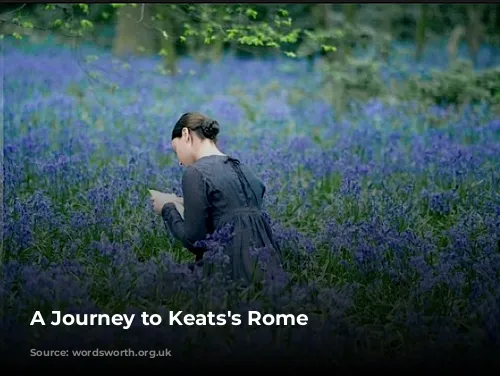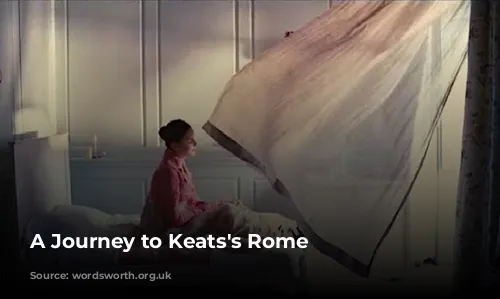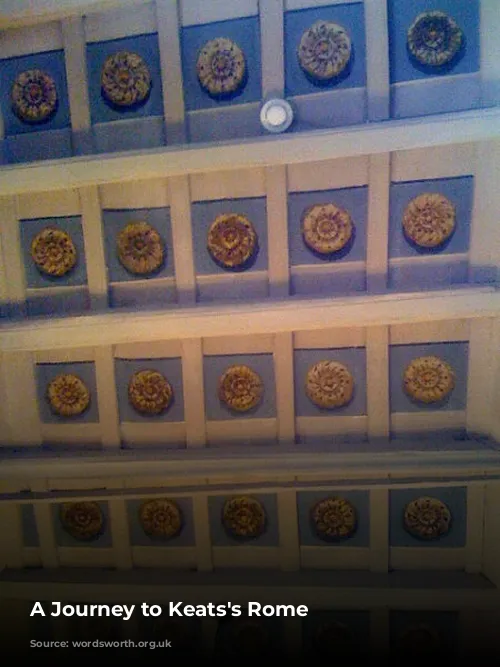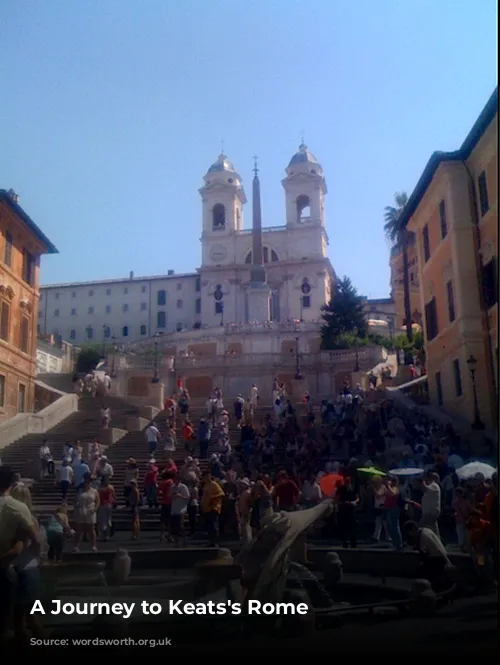It’s October 21st, a day etched in history for John Keats and myself. On this very date in 1820, Keats embarked on a desperate voyage to Italy, seeking solace in the warmth of the Italian sun to heal his ailing body. It’s also the day I entered this world, just like Samuel Taylor Coleridge in 1772.
This cosmic connection to the great Romantic poet has always captivated me. It’s a shared birthday, a shared love for the English language, and a shared fascination with the streets of Rome.
The cobbled streets of Rome whisper with tales of the past. Ancient footprints are etched into the very fabric of the city, as if to remind us of those who walked before us.
The Spanish Steps, a majestic stairway connecting the Piazza di Spagna to the Trinita dei Monti church, stand as a testament to the city’s architectural grandeur. It’s a place where history and beauty converge, a symphony of stone and time.

The Keats-Shelley House
My journey to Rome began in 1999, drawn by the allure of the Keats-Shelley House, a haven for literary pilgrims. It was within these hallowed walls that the great Romantic poets John Keats and Percy Bysshe Shelley found their final resting place.
It was a pilgrimage I had long desired, but the house remained elusive. Time after time, I arrived only to find its doors closed. Finally, in August 2010, my persistence was rewarded, and I stepped inside the very apartment where Keats breathed his last on February 23, 1821, at the tragically young age of 25.
The Keats-Shelley House is a time capsule, preserving the essence of a bygone era. Walking through its rooms, I felt an intimate connection to Keats’s final days.

The Spanish Steps: A Symbol of Power and Beauty
The Spanish Steps are an iconic landmark, a magnet for tourists from all corners of the globe. But their appeal transcends mere beauty; they represent a confluence of history, power, and artistic brilliance.
The Scalinata, as it’s known in Italian, is a testament to the rivalry between Spain and France for cultural dominance in Rome. Built in the 18th century by a French diplomat, it was intended to link the Bourbon Spanish Embassy to the Holy See.
A Poetic Legacy
The lives and deaths of Keats and Shelley are inextricably linked to the city of Rome. Both poets died in Italy, leaving behind a legacy of hauntingly beautiful verse.
Keats, ravaged by tuberculosis, sought respite in the Italian sun. He arrived in Rome in November 1820, and within three months, his life was extinguished.
His final days are immortalized in Jane Campion’s poignant biopic, “Bright Star,” a film that captures the essence of his poetic genius and the enduring love story he shared with Fanny Brawne.

A Life Cut Short
Keats’s life was a tragic tapestry, woven with threads of sorrow and loss. He experienced the death of his father, the collapse of his mother’s second marriage, and the untimely demise of his brother to tuberculosis.
The cruel hand of fate ultimately claimed him as well, robbing the world of a brilliant talent.
A Window to the Past
Standing in Keats’s bedroom, I felt a profound connection to the poet. Although none of the original furnishings remain, the room itself speaks volumes. The Scalinata outside his window, the river of humanity flowing up and down the steps, inspired him to some of his most enduring works.
It’s easy to imagine him gazing out at the scene, his spirit stirred by the vibrant energy of Rome. The room holds a quiet melancholy, a reminder of the fleeting nature of life.
A Legacy That Endures
John Keats was a radiant star, a luminous talent that burned brightly but all too briefly. He left behind a legacy of poetry that continues to inspire generations of readers.
His words are a testament to the enduring power of art, a reminder that beauty transcends time and death.
On this 21st of October, as we celebrate the anniversary of Keats’s arrival in Italy, let us remember his extraordinary gifts and the enduring impact he has had on our world.
His legacy is a reminder that even in the face of mortality, art can offer solace and immortality.
